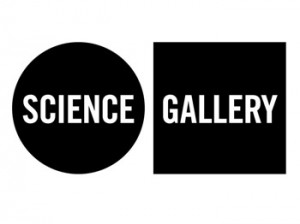Event Alert: "BIORHYTHM: Music and the Body," Opens June 2 at Eyebeam Art + Tech Center
The new exhibition, BIORHYTHM: MUSIC AND THE BODY, will open June 2 at Eyebeam Art + Technology Center in Chelsea. At this, the world’s largest research experiment on music and emotion, you may get fresh insights on the music that you love, and help the scientific community gather valuable information at the same time.
The good people from BIORYTHM explain it all thusly:
What is the science behind humming or toe-tapping? Can you see your own voice? This brand new exhibition will help you explore the answers to these and more.
BIORHYTHM: Music and the Body was created by Trinity College Dublin’s Science Gallery, a leading international initiative blending science, art, and innovation, and is now coming to the US for the first time. The exhibition will premiere on June 2 as the first-ever to be invited to participate in the World Science Festival at Chelsea’s Eyebeam Art + Technology Center. The exhilarating and interactive exhibition incorporates sonic experiences, installations, experiments, and performances to explore how music moves the body.
Dubbed “the most creative, innovative, and artistic venue in Ireland” (Irish Times), Science Gallery ignites creativity and discovery where science and art collide. True to this credo, BIORHYTHM: Music and the Body features a number of installations ranging from the beautiful to the bizarre – a human banjo, a sonic bed of subwoofers, and the multiplayer audiovisual Reactable, to name a few.
Artists participating in BIORHYTHM include Kaffe Matthews, Italian multimedia artist TeZ and Reactable systems. In a special opening performance on June 3rd, Dublin artist Joan Healy will debut in the US an installation in which she is suspended upside down, using her hair to create an interactive art and music piece that the audience is invited to play. Also performing at the opening event is New York beatboxer Chesney Snow and the Stone Forrest Ensemble who will have their emotional and physical response measured while performing, in order to see in practice how music and the body interact.
BIORHYTHM comes to New York’s World Science Festival for its international debut from Dublin, where the exhibition attracted tens of thousands of participants, challenging their perception and knowledge of music as a central part of the human experience. The emotional responses to music collected at BIORHYTHM will build on a mass of data already collected in Ireland, amassing the world’s largest collection as part of an international study on the topic.
BIORHYTHM: Music and the Body will be open in NYC through August 6.








Henisdov
June 6, 2011 at 3:03 pm (13 years ago)Biorythm, Music And The Body A. Biorythm, music and the bodyhttp://www.eyebeam.org/events/biorhythm-music-and-the-body B. http://sciencenewsmagazine.org/view/generic/id/63645/title/LettersSep. 26, 2010On Touch And Hear Senses(pulse.yahoo.com)Why Music Touches-Moves Us (Nov 11, 2005 DH,biologicalEvolution forum) Music is a human cultural-artifactual elaboration of creatures’ vocal communication which is an extension-elaboration of >24 wks-old in-womb fetus’ and of newborns’ intimate safe/coddle/sooth experiences. Both ‘touch’ and ‘hear’ senses are founded on mechanical sensing processes involving in-cell ions leakage forming electrical action potentials interpreted neurologically. I suggest/conjecture that the same neurological constellation may be handling both ‘touch’ and ‘hear’ senses, being of commom mechanisms and differing essentially only in switch-on modes, and that this evolves in all vocal creatures in conjunction with in-womb safety, followed with baby codling/handling and vocal soothing/communicating, and later also with intimate emotional implications. Hence music has ‘engulfing-touching-emotional’ connotation and personal music orientation has also childhood-ethnic rootings. Dov Henis (Comments From 22nd Century)